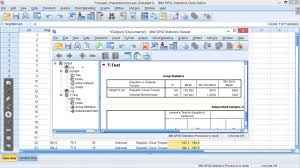
Macroeconomics Short Answer Questions
Order Instructions:
the instruction is on the cover sheet, for the graph can you draw it as a jpg because last time the line is just massing around when i summit. i have also upload the chapter key point and ppt. so you can have a look
SAMPLE ANSWER
MACRO1 (ECON1010) Assignment 2
Submit online at the ‘Assessment Task’ in Blackboard
Due: 11:59PM on 14 May (Sunday)
Tutorial Time and Day: _______________________________________________________________________________________________
Student Name: ________________________________________________________________________________________________________
Student ID: _____________________________________________________________________________________________________________
Macroeconomics Short Answer Questions
- The Reserve Bank of Australia (RBA) has the following three options to influence the money supply in the Australian financial market. Give a brief description of how each operates.
- Open market operations (2 marks)
Open market operations refers to a policy by the national reserve bank involving buying an selling of government securities such as treasury bonds, mortgage-backed securities and treasury bills from its member banks in the open capital market as a strategy to expand or contract the amount of money circulating within the economy. Applying this policy to control money supply in the economy would involve the Reserve Bank of Australia (RBA) purchasing Australian government securities to decrease the money supply or selling these securities to increase the amount of cash circulating in the economy. The RBA would purchase government securities being held by financial institutions to mop up and withdraw excess money supply in the economy, or sell these securities to inject cash into the money market.
Purchasing government securities in the open market by the RBA would add credit reserves to commercial banks, similar to a direct deposit by the government, and would expand money supply through the multiplier effect by increasing cash available for lending to other banks and to customers.
- Reserve ratio (2 marks)
Commercial banks in pursuit of their profit-making objective try to lend as much as possible to increase revenues from interest payments. If un-regulated, they would lend out all their deposits, which would increase risk of insolvency and create instability in the banking sector. The reserve ratio is the fraction or percentage of customer deposits that commercial banks are required to hold as reserves. As a way of regulating the activities of banks, the RBA requires commercial banks to maintain a small proportion of their deposits, which is about 10 percent, in reserve when they close after each business day. Reserves are customer deposits that banks have received but have not loaned out. In a fractional-reserve banking system adopted in many countries of the world, commercial banks are required by banking regulation to hold a fraction of the money deposited by customers as reserves. This amount is usually enough to cover the daily withdrawals by customers after lending out the rest.
- Cash rate (2 marks)
The official cash rate is the interest rate percentage that commercial banks and other financial institutions can earn from lending their currency reserves on an overnight basis in the short-term money market. The cash rate is the overnight inter-bank lending rate of interest. The cash rate is used by the RBA as an instrument for influencing the amount of money supply in the economy. Increasing the cash rate raises the level of interest rates in the retail credit market, while decreasing the cash rate lowers interest rates in the economy.
The official cash rate affects general economic activity as changes flow through to interest rates charged by commercial banks to borrowers.
- Now demonstrate what happens to value of money, the price level and the real interest rate using the money supply (MS) and money demand (MD) diagram shown below.
- The Reserve Bank of Australia (RBA) increases the reserve ratio in the fractional banking system.(2 marks)
An increase in the reserve ratio increases the mandatory reserve required by the RBA for commercial banks to maintain in their vaults, which decreases the amount of money available for banks to lend to the public. This decreases the money supply in accordance with the multiplier effect since it decreases the amount of credit money available in the economy. With demand for money and other factors remaining constant, increasing the reserve ratio withdraws cash from the economy and thus decreased supply of money, which in turn increases the value of money since there is a smaller amount of money in circulation available to purchase the same goods and services being produced in the economy. This is shown on the diagram as a shift to the left of the money supply curve from MS1 to MS2 while demand MD remains constant. The quantity of money supply in the economy falls from Q1 to Q2 while the value of money rises from V1 to V2.
- RBA purchases government securities through the open market operations. (2 marks)
Purchasing government securities in the open market increases the money supply in the economy by injecting cash into the money market and by extension the economy. Holding demand for money constant, this results in an increase in the supply of money in circulation and available for purchasing the same goods and services, which decreases the value of money. In the diagram, this is shown by a shift of the money supply curve to the right from MS1 to MS2, which increases the quantity of money supply from Q1 to Q2 and decreases the value of money from V1 to V2
- Consider an economy that is initially in long run equilibrium in the Aggregate Demand and Aggregate Supply (AD-AS) diagram that we covered in lectures. Suppose many Australian firms mistakenly expect that there will be an increase in the relative price of their own products as compared to others (including relative to the input costs and wages they pay). Start with the equilibrium point shown in the Figure below and use it to demonstrate the following changes.
- How does this change the aggregate price level, real income and unemployment in the short run? Explain and illustrate in the AD-AS diagram (3 marks)
In the short-run, an increase in the overall price level tends to raise the quantity of output supplied by producers in an economy. Expectations of increased relative prices of products relative to production costs and wages would create increased business confidence and increased investment, which would result in increased production and increased amount of goods and services output by producers within the economy. The move by firms to increase production activity would lead to the increased utilization of capital and labour production factors. This would further result in increased investment and decreased unemployment in the short-run.
Increased production output would result in increased supply of goods and services which would cause a surplus in the economy in the short run, which would cause a decrease in the price level. In the AD-AS model, this would be shown as a shift downwards and to the right of the aggregate supply curve from SRAS0 to SRAS1, with a new short-run equilibrium corresponding to a lower price level P1 since there is the same volume of money to purchase the increased amount of output in the economy.
- Explain the adjustment process to long run equilibrium (assuming that real potential output remains unchanged, so no change in LRAS), and what happens to the price level. No need to demonstrate it in Figure but it may be helpful. (3 marks)
A change in the price level in the long-run does not affect the quantity of output and supply in the long-run. This is because the potential output level, also known as the natural level of output or full-employment output, in the economy is determined by capital endowment, labour supply and technology that are not affected by changes in the price level over the long-run. The increase in output and supply of goods and services would therefore result in a surplus output, which would lead to a decrease in the price level in the economy. According to the AD-AS model, the economy has a tendency to revert to some form of long-run equilibrium, which is referred to as the steady-state equilibrium. This self-correcting mechanism works through the supply side in that an increase in output and aggregate supply in the short-run causes aggregate demand to fall following a period of inflation, which makes the equilibrium level to self-corrects to a new price level over the long-run.
This is demonstrated by the equilibrium level remaining constant along the LRAS curve since a shift of the AD curve upwards and to the right indicating an increase in aggregate demand over the long-run is countered by a shift of the AS curve downwards and to the left indicating an increase in aggregate supply.
- Some economists hold the views that Australia is heading to a recession (for such a view, read here http://www.abc.net.au/news/2016-07-29/australia-headed-for-recession-next-year,-professor-keen-says/7674154
One such scenario may come from a crash in the Australian housing market. Keeping in mind of the Aggregate Demand and Supply (AD-AS) framework, elaborate how such a shock may affect the Australian economy. Also, discuss what policy instruments the government have in response, and how they work in practice?
A recession results from adverse shifts in aggregate supply, which causes decreased levels of real GDP output and other measures of income, consumption spending and production factors while unemployment and price levels rise. According to the AD-AS model, the level of output and prices in an economy adjust to create an equilibrium or balance between aggregate demand and aggregate supply. Policy response options for the government would be to take no action assuming that the economy would always self-correct to its initial full-employment equilibrium over the long-run. Heated debate amongst economists has resulted in a division between Neo-classical and Keynesian economists. Neo-classical economic theories argue that the economy would self-correct to its long-run equilibrium after a recession while Keynesian economic theory argues that taking no action would unnecessarily prolong the recession since the economy would not by itself revert to previous steady-state equilibrium. Keynesian economic theory of monetary policy has proven effective in the past during the Great Depression in restoring the US economy back to full-employment. The theory recommends taking action to either raise aggregate demand or aggregate supply or both, which implies a decision on which of either curves in the AD-AS model to influence and through what policies.
To correct the fall in short-run aggregate supply, the government could either adopt policies to expand aggregate demand keeping output at its natural long-run level, which would cause the price level to rise further and worsen the recession before the policies begin to take effect. To forestall the impending economic shock that would result from a burst market bubble in the real estate sector, the government through the RBA could pursue contractionary monetary policies. This would take the form of strategies such as selling government securities to member banks in the open market and increasing the interest rate to slow down inflation and economic growth by lowering lending rates and decrease over-investment in the economy and in specific sectors. In the event of a recession, expansionary monetary policies can be adopted to lower unemployment and stimulate economic growth. Such policies would seek to expand money supply and lower interest rates so as to boost production and consumption economic activity, and to lower unemployment.
We can write this or a similar paper for you! Simply fill the order form!












